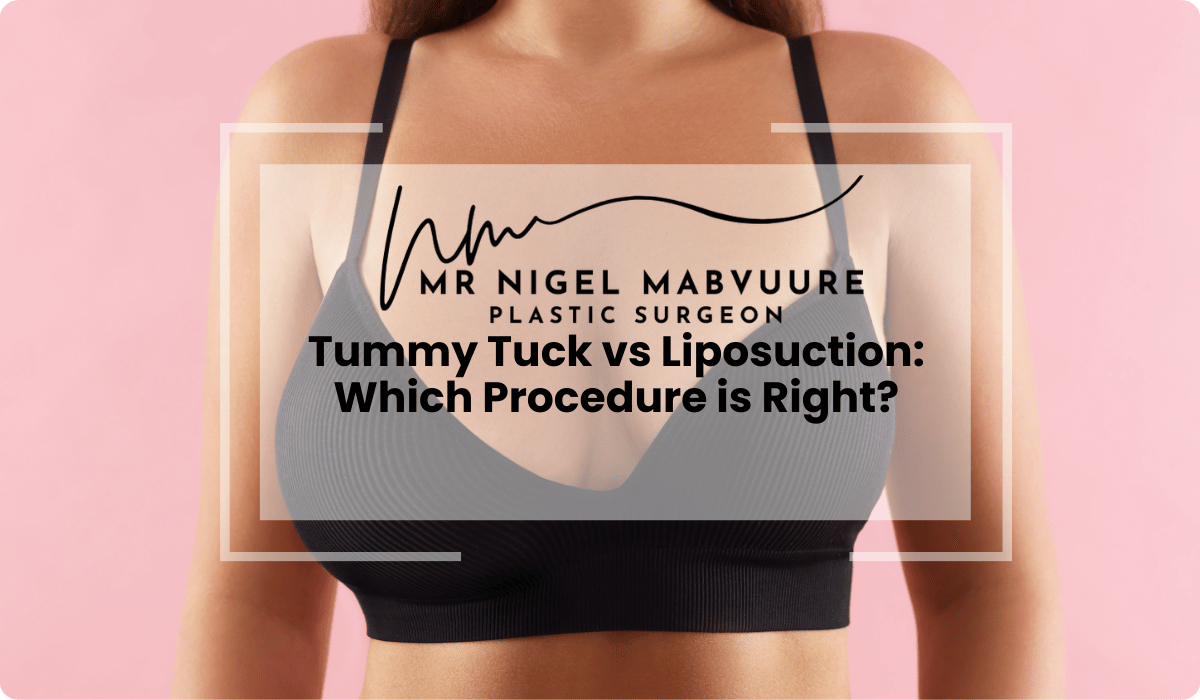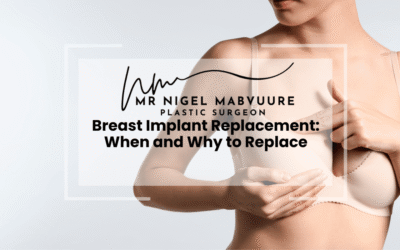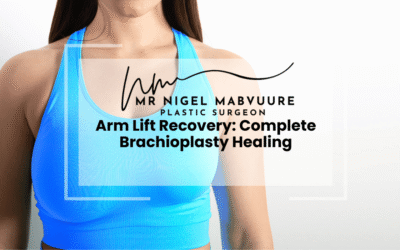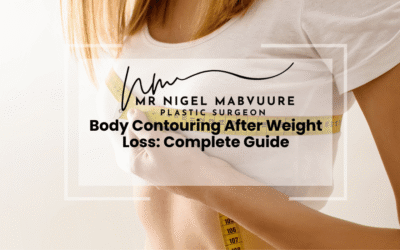Essential Insights: Choosing Between Tummy Tuck and Liposuction
When deciding between abdominal contouring procedures, understanding these crucial distinctions can guide your choice:
- Procedure Focus: Liposuction removes fat deposits only, while tummy tucks address excess skin, fat, and repair separated abdominal muscles (diastasis recti).
- Candidate Profile: Liposuction works best for patients with good skin elasticity and localized fat, while tummy tucks suit those with significant skin laxity following pregnancy or weight loss.
- Recovery Investment: Liposuction typically requires 3-7 days before returning to work with 2-6 weeks of compression garment use, whereas tummy tucks demand 2-3 weeks off work with a full recovery period of 3-6 months.
- Financial Considerations: Expect to invest £3,500-£5,500 for abdominal liposuction and £6,000-£8,500 for a complete tummy tuck in the UK market.
- Result Longevity: While both procedures remove fat permanently, tummy tucks generally maintain better long-term results due to their structural improvements, particularly when patients maintain stable weight.
- Combined Approach: Many patients achieve optimal results through lipoabdominoplasty, which addresses all abdominal aesthetic concerns in a single recovery period.
The most successful outcomes come from selecting the procedure that specifically addresses your unique anatomical concerns rather than choosing based solely on recovery time or cost factors.
Table of Contents
- Understanding Tummy Tucks and Liposuction: Core Differences
- How Do Tummy Tucks and Liposuction Target Belly Fat?
- Comparing Recovery Timelines for Abdominal Contouring Options
- Ideal Candidates: Are You Better Suited for Lipo or Abdominoplasty?
- Combining Procedures: When to Consider Both Tummy Tuck and Lipo
- Cost Comparison: Investment in Different Stomach Surgery Options
- Long-Term Results: Which Abdominal Procedure Maintains Better?
Understanding Tummy Tucks and Liposuction: Core Differences
When considering abdominal contouring options, understanding the fundamental differences between tummy tuck (abdominoplasty) and liposuction is crucial for making an informed decision. These procedures address distinct aesthetic concerns and employ different surgical approaches.
A tummy tuck is a comprehensive surgical procedure that removes excess skin and fat while tightening weakened or separated abdominal muscles. This procedure is particularly effective for patients who have experienced significant weight fluctuations, pregnancy, or ageing that has resulted in sagging abdominal skin and muscle laxity. During an abdominoplasty, the surgeon makes an incision across the lower abdomen, repositions the naval, repairs the underlying muscle structure, and removes redundant skin before closing the incision.
In contrast, liposuction focuses exclusively on fat removal without addressing skin laxity or muscle structure. This procedure involves the insertion of a thin tube (cannula) through small incisions to suction out subcutaneous fat deposits. Liposuction can be performed using various techniques, including tumescent liposuction, ultrasound-assisted liposuction, or laser-assisted liposuction.
The scope of these procedures represents their most significant difference. While liposuction is primarily a fat reduction technique, a tummy tuck is a reconstructive procedure that reshapes the entire abdominal profile. Understanding these core differences is essential when weighing tummy tuck vs liposuction as your abdominal contouring option.
How Do Tummy Tucks and Liposuction Target Belly Fat?
When comparing tummy tuck vs liposuction, the way each procedure targets belly fat represents a fundamental difference that influences patient outcomes and satisfaction.
Liposuction specifically targets subcutaneous fat—the fat layer that lies directly beneath the skin but above the muscle layer. Through small incisions (typically 3-5mm), a surgeon inserts a cannula to break up and suction out localised fat deposits. This procedure is particularly effective for removing diet-resistant fat pockets in areas like the lower abdomen, flanks (love handles), and upper abdomen. Modern liposuction techniques include power-assisted liposuction (PAL), which uses mechanical vibration to break up fat cells, and VASER liposuction, which employs ultrasound technology to liquefy fat before removal, potentially allowing for more precise contouring.
Tummy tucks approach belly fat more comprehensively. While this procedure does include fat removal, it also addresses the other components of abdominal protrusion. During an abdominoplasty, the surgeon not only removes excess fat but also excises redundant skin and, crucially, repairs the rectus abdominis muscles. These muscles often separate (diastasis recti) following pregnancy or significant weight fluctuations, creating a protruding abdomen that cannot be corrected through fat removal alone. By suturing these muscles back together, a tummy tuck addresses one of the primary structural causes of a protruding belly.
It’s important to note that neither procedure effectively targets visceral fat—the deep internal fat surrounding organs. This type of fat, associated with greater health risks, responds best to diet and exercise rather than surgical intervention.
Comparing Recovery Timelines for Abdominal Contouring Options
Recovery experiences and timelines differ significantly between tummy tuck and liposuction procedures, which is an important consideration when choosing between these abdominal contouring options.
Liposuction typically offers a shorter recovery period. Most patients can return to desk jobs within 3-7 days following the procedure. Initially, patients wear compression garments for 2-6 weeks to minimise swelling and help the skin contract to the body’s new contours. While bruising and swelling are common, these symptoms generally subside significantly within 2-3 weeks. Discomfort is usually manageable with oral pain medication, and patients can typically resume light exercise after 2 weeks, with a gradual return to more strenuous activities by 4-6 weeks post-procedure.
Tummy tuck recovery is more extensive, reflecting the procedure’s comprehensive nature. Patients generally require 2-3 weeks away from work and normal daily activities. The initial recovery phase involves careful management of surgical drains for 1-2 weeks and strict limitations on physical positioning—patients must avoid fully straightening their torso to prevent tension on the incision. Compression garments are worn for up to 8 weeks, and patients may experience more significant discomfort requiring stronger pain management. Full recovery, including the resumption of strenuous exercise and the complete resolution of swelling, may take 3-6 months.
Regardless of which procedure you choose, following your surgeon’s post-operative instructions diligently is crucial for optimal results and minimising complications. The extended recovery of a tummy tuck represents a significant investment of time but delivers comprehensive abdominal transformation that liposuction alone cannot achieve.
Ideal Candidates: Are You Better Suited for Lipo or Abdominoplasty?
Determining whether you’re an ideal candidate for liposuction or a tummy tuck requires honest assessment of your body concerns, overall health, and aesthetic goals. Each procedure serves distinct patient populations with different abdominal issues.
Liposuction candidates typically present with these characteristics:
- Localised fat deposits resistant to diet and exercise
- Good skin elasticity that will contract smoothly after fat removal
- Minimal to no excess skin or abdominal muscle separation
- Within 30% of their ideal body weight
- Non-smokers with realistic expectations about fat reduction (not weight loss)
Tummy tuck candidates often exhibit:
- Significant excess or sagging abdominal skin
- Stretched or separated abdominal muscles (diastasis recti)
- Stable weight, preferably at or near their goal
- Completed family planning (for women), as future pregnancies can reverse results
- Good overall health suitable for major surgery
Women who have experienced multiple pregnancies or individuals who have lost substantial weight often benefit more from a tummy tuck, as these life events typically cause both skin laxity and muscle separation that liposuction cannot address. Conversely, younger patients with good skin tone but persistent fat deposits despite healthy lifestyle habits may achieve their desired results through liposuction alone.
During your consultation, a board-certified plastic surgeon will evaluate factors such as skin quality, fat distribution, muscle tone, and overall health to recommend the most appropriate abdominal contouring option for your unique anatomy and goals.
Combining Procedures: When to Consider Both Tummy Tuck and Lipo
When weighing tummy tuck vs liposuction, many patients discover that the optimal solution may not be choosing between procedures but combining them. This integrated approach, sometimes called lipoabdominoplasty, offers comprehensive abdominal contouring that addresses multiple aesthetic concerns simultaneously.
Combining these procedures is particularly beneficial for patients presenting with:
- Excess abdominal skin and muscle laxity requiring tummy tuck correction
- Stubborn fat deposits extending beyond the central abdomen, such as the flanks or upper abdomen
- Desire for more refined contouring of the waistline and transition areas
- Sufficient health status to undergo a longer, more extensive procedure
The integration typically involves performing liposuction first to remove fat deposits throughout the abdomen and flanks, followed by the tummy tuck to excise redundant skin and repair abdominal muscles. This sequence allows the surgeon to create more harmonious body contours and a more natural-looking outcome than either procedure alone might achieve.
Beyond the aesthetic advantages, combining procedures offers practical benefits, including a single recovery period rather than two separate surgical experiences and recovery timelines. While the initial recovery may be slightly more intensive than for liposuction alone, it eliminates the need for multiple surgeries and anaesthesia sessions.
However, combined procedures increase surgical time, which may elevate certain surgical risks. They also typically cost more than individual procedures, though less than having both done separately. Your surgeon will carefully evaluate whether you’re a suitable candidate for combined tummy tuck and liposuction based on your health status, aesthetic goals, and anatomical considerations.
Cost Comparison: Investment in Different Stomach Surgery Options
Understanding the financial implications of tummy tuck vs liposuction is an essential aspect of the decision-making process. These procedures represent significant investments in your body contour, with distinct price points reflecting their complexity, technique, and scope.
In the UK, liposuction of the abdomen typically ranges from £3,500 to £5,500, depending on the extent of the area treated and the specific technique employed. VASER or ultrasound-assisted liposuction generally commands premium pricing compared to traditional liposuction. Small-area liposuction costs less, while comprehensive abdominal and flank contouring falls at the higher end of the spectrum.
Tummy tuck procedures represent a more substantial investment, with prices typically ranging from £6,000 to £8,500. This higher cost reflects the procedure’s complexity, longer operating time, extended hospital stay (often overnight), and more intensive post-operative care requirements. Mini-tummy tucks, which address only the lower abdomen, may cost less than full abdominoplasties.
Combined procedures that integrate both tummy tuck and liposuction generally range from £7,500 to £10,000, offering some cost efficiency compared to having the procedures performed separately while delivering more comprehensive results.
Additional cost considerations include:
- Consultation fees (sometimes deductible from procedure cost)
- Anaesthesia and facility fees (may be included or separate)
- Post-surgical garments (£100-£300)
- Time away from work during recovery
- Potential revision procedures
While cost is understandably an important factor, it should not be the primary consideration when choosing between abdominal contouring options. The most cost-effective approach is selecting the procedure that will best address your specific concerns and deliver long-lasting satisfaction.
Long-Term Results: Which Abdominal Procedure Maintains Better?
When investing in body contouring surgery, understanding the longevity and sustainability of results becomes crucial to making an informed decision between tummy tuck vs liposuction. Both procedures can deliver lasting improvements, but they differ significantly in how they withstand life changes and the ageing process.
Liposuction results can be considered permanent in terms of fat cell removal. Once fat cells are extracted from an area, they do not regenerate in that specific location. However, this doesn’t prevent weight gain entirely. The remaining fat cells can still expand if significant weight is gained, potentially affecting contour. Additionally, liposuction does not address skin laxity or muscle separation, which means that if these issues develop later (due to ageing, weight fluctuation, or pregnancy), the aesthetic results may deteriorate over time.
Tummy tuck results tend to demonstrate superior longevity for several reasons. By repairing separated abdominal muscles, removing excess skin, and repositioning the remaining skin, a tummy tuck creates structural improvements that liposuction cannot achieve. The muscle repair element particularly contributes to long-term abdominal flatness. While the ageing process continues and skin will naturally lose some elasticity over decades, the comprehensive nature of abdominoplasty typically delivers results that maintain better through the years.
For both procedures, result longevity depends significantly on patient behaviour. Maintaining stable weight through proper nutrition and regular exercise is essential for preserving the surgical investment. Future pregnancies can dramatically alter results from either procedure, with tummy tuck results being particularly vulnerable to the muscle separation that often occurs during pregnancy.
While both procedures can deliver high satisfaction when appropriately selected for the right candidate, patients with significant skin laxity and muscle separation who choose abdominoplasty typically report higher long-term satisfaction with their abdominal contour compared to similar patients who opt for liposuction alone.
Frequently Asked Questions
Can a tummy tuck remove all my belly fat?
No, a tummy tuck isn’t primarily a fat removal procedure. While it does remove some superficial fat, a tummy tuck’s main purpose is to remove excess skin and repair separated abdominal muscles (diastasis recti). Tummy tucks target the structural causes of a protruding abdomen rather than focusing solely on fat reduction. For patients with significant fat deposits, combining liposuction with a tummy tuck often provides optimal results.
How much weight will I lose with liposuction or a tummy tuck?
Neither procedure is considered a weight loss solution. Liposuction typically removes between 2-5 pounds of fat, while a tummy tuck may result in 5-10 pounds of tissue removal (including skin and fat). The primary benefit of both procedures is improved body contour and proportions, not weight reduction. Patients should be at or near their ideal weight before undergoing either procedure for best results.
Will I have noticeable scars after these procedures?
Liposuction scars are minimal, typically 3-5mm in length and strategically placed in inconspicuous areas. These scars generally fade significantly over time. Tummy tuck scars are more substantial, with a horizontal incision from hip to hip above the pubic area and possibly a scar around the navel. While tummy tuck scars are permanent, they’re placed low enough to be hidden by underwear or swimwear, and proper scar care can improve their appearance substantially.
How do I know which procedure is right for me?
The right procedure depends on your specific anatomy and concerns. Choose liposuction if you have good skin elasticity, localized fat deposits, and no muscle separation. Opt for a tummy tuck if you have excess skin, stretched abdominal muscles, or skin laxity that won’t rebound after fat removal. A consultation with a board-certified plastic surgeon is essential for personalized recommendations based on your unique body characteristics and aesthetic goals.
Can I get pregnant after a tummy tuck?
Yes, you can safely get pregnant after a tummy tuck, but it’s generally recommended to postpone abdominoplasty until you’ve completed family planning. Pregnancy after a tummy tuck will likely reverse many of the surgical benefits as the abdominal muscles stretch again and the skin expands to accommodate the growing baby. If you do become pregnant after a tummy tuck, your previous surgery won’t impact your ability to carry a healthy pregnancy.
How long before I see final results from each procedure?
Liposuction results become increasingly visible as swelling subsides, with initial improvements noticeable within 2-4 weeks and final results apparent after 3-6 months when all swelling resolves. Tummy tuck results follow a longer timeline, with significant improvement visible once drains are removed (1-2 weeks), but final results take 6-12 months as internal healing completes and tissues settle. Patience is essential with both procedures, as the body needs time to adapt to its new contours.
Are the results from liposuction or tummy tuck permanent?
Both procedures offer long-lasting results with proper maintenance. Fat cells removed during liposuction don’t regenerate in treated areas, but remaining fat cells can enlarge with weight gain. Tummy tuck results tend to be more durable because they address structural issues by repairing muscles and removing excess skin. However, significant weight fluctuations, future pregnancies, or natural aging can affect results from either procedure. Maintaining stable weight through healthy lifestyle habits is crucial for preserving your surgical investment.




